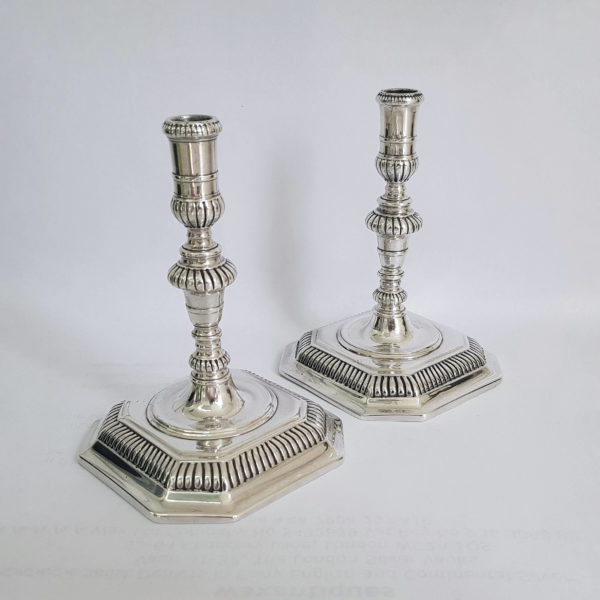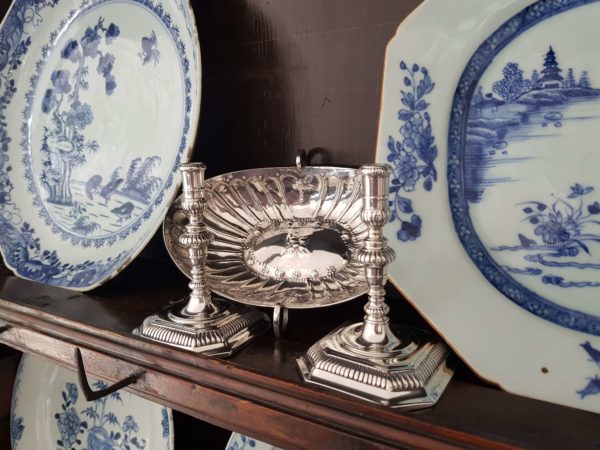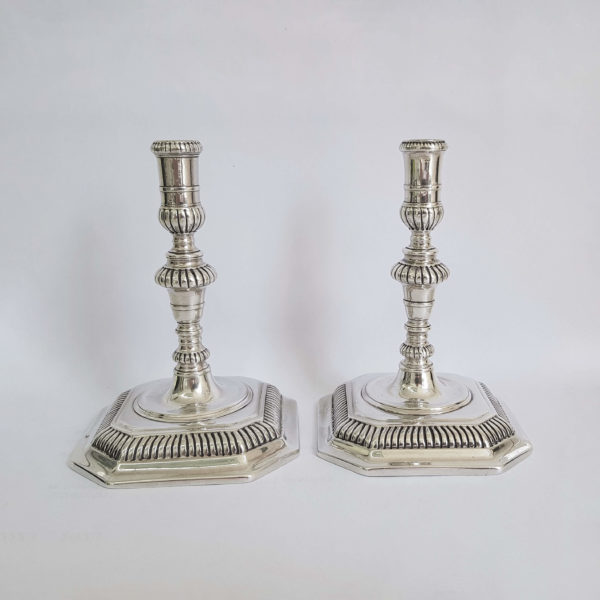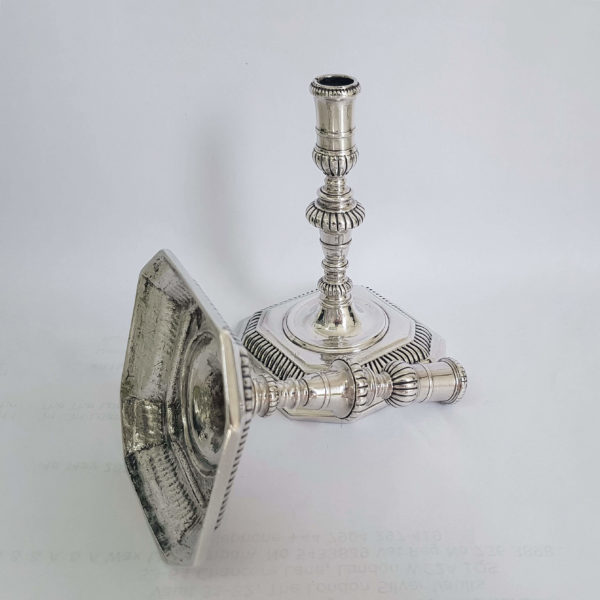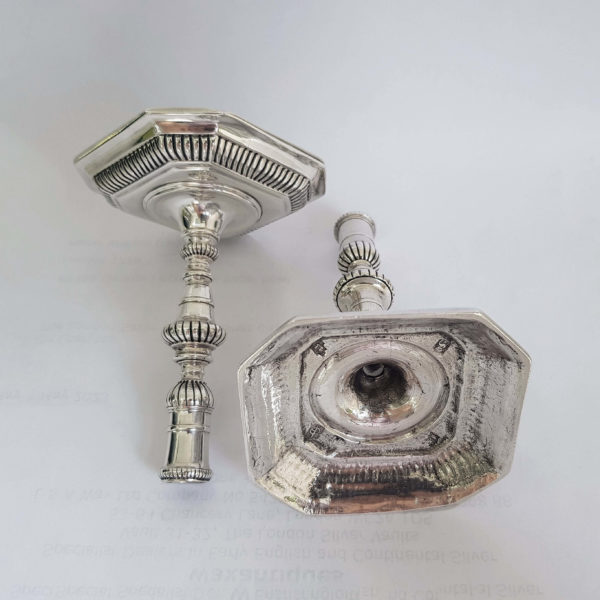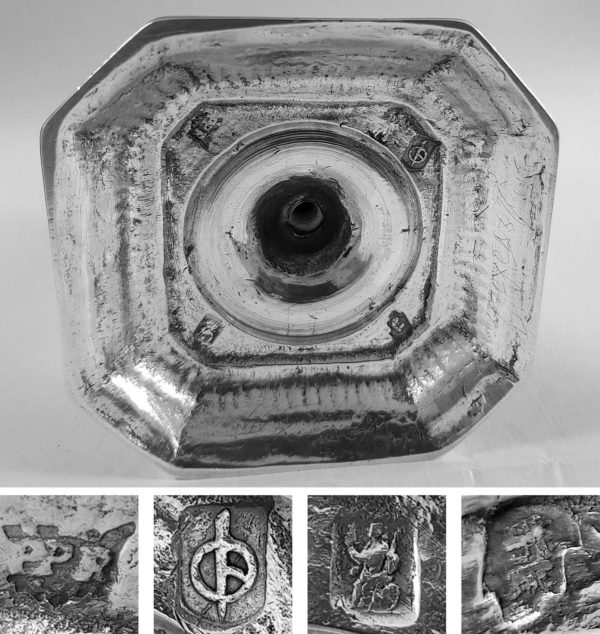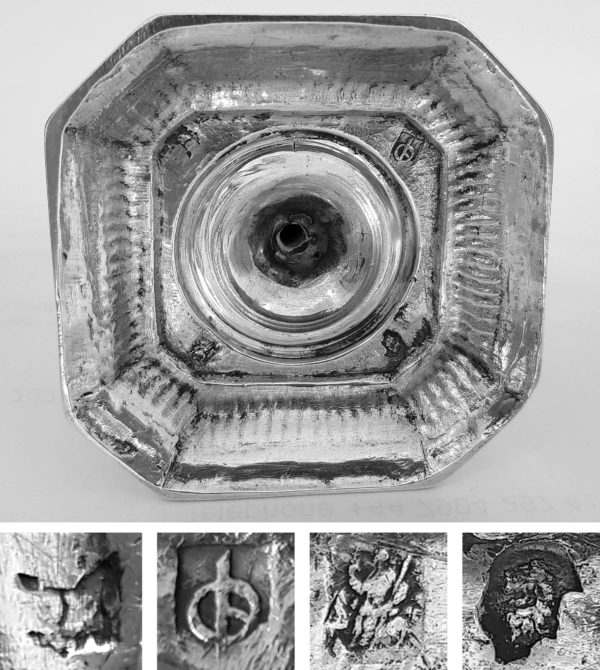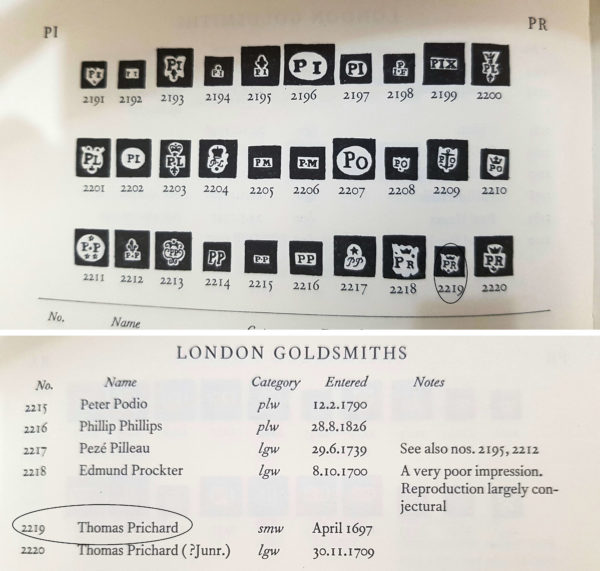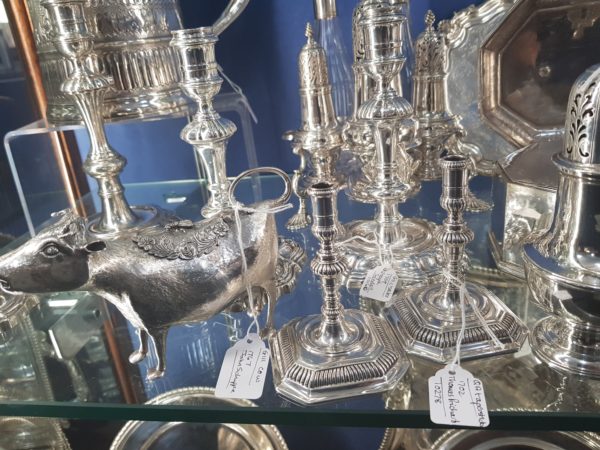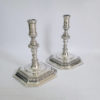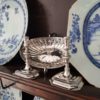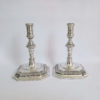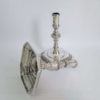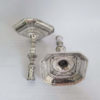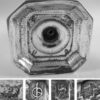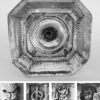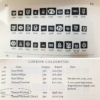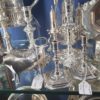Queen Anne Antique Silver Tapersticks
SOLD
Stock: 10278
Date: 1702
Maker: Thomas Prichard
Country: England
A stunning pair of little antique silver tapersticks with square bases and lobed, gadroon decoration. Superb quality. Lovely crisp finish....
Description
Description
A stunning pair of little antique silver tapersticks with square bases and lobed, gadroon decoration. Superb quality. Lovely crisp finish. The technique of making cast silver sticks was introduced into England circa 1685 and this is one of the early designs.
Weight 267 grams, 8.5 troy ounces.
Height 9.8cm. Base 6.8cm.
London 1702.
Maker Thomas Prichard.
Marks. Each stick is stamped underneath in the corners with a full set of clear, matching English silver hallmarks. Both sticks have a badly stamped maker’s mark, one with “PR” double struck, the other is very indistinct but you can make out “PR” if you look carefully. This is probably Thomas Prichard.
*Britannia Standard. In 1696, so extensive had become the melting and clipping of coinage that the silversmiths were forbidden to use the sterling standard for their wares. Instead the new higher standard, 95.8 per cent pure had to be used and new hallmarks were ordered, “the figure of a woman commonly called Britannia” and the lion’s head erased (torn off at the neck) replacing the lion passant and the leopard’s head crowned. This continued until the old standard of 92.5 per cent was restored in 1720.
Literature. Tapersticks, averaging about 5 inches high are miniature table candlesticks used to hold a wax taper. They are rarer than candlesticks and very few exist prior to the Queen Anne period. They usually appear in singles and pairs of tapersticks command a premium price.
The manufacture of this pair of tapersticks is technically advanced for the period, circa 1685-1710, and shows a strong Huguenot influence. Cast silver candlesticks were first made in London during the 1680’s, the same time as the influx of Huguenot refugees fleeing French persecution. The Huguenots brought with them the superior techniques of modelling and casting needed to supply the new types of silverware in the fashionable “French” style. During that period a large quantity of Huguenot silverwares was stamped with English maker’s marks as the newly arrived foreign silversmiths were forced to take whatever work was offered, often as outworkers at very low rates of pay. It’s also possible that a Huguenot workshop was operating in London during this period supplying candlestick parts such as bases, stem sections and sockets for English workshops to assemble. Because of this it can be difficult to know from the maker’s mark whether a piece of silver from this period was made by an English or Huguenot worker and one needs to also look at the style and technique.
Condition
These fantastic little sticks are in very good condition with moderate signs of wear commensurate with age. Excellent patina.
Maker Information
Maker: Thomas Prichard
Thomas Prichard, London silversmith, apprenticed to Charles Laughton of the Grocers’ Company 1687, free 1695. 1st mark as smallworker undated, probably 1697. 2nd mark 1709. Prichard was master of John Edwards II.
Our Guarantee
Customer satisfaction is our primary concern
All silverware on our website is checked thoroughly prior to offering it for sale and every product listing contains a condition report and details of the silver hallmarks.
All items offered on our website include:
- Free Shipping Worldwide
- Tracked and Insured
- 14 day no quibble money back guarantee
- We are accredited members of LAPADA and conform to their strict professional standards
- We dispatch 1-3 days after receiving cleared payments
More detailed information about deliveries, returns and how to pay is available in the Help section at the bottom of this page.
